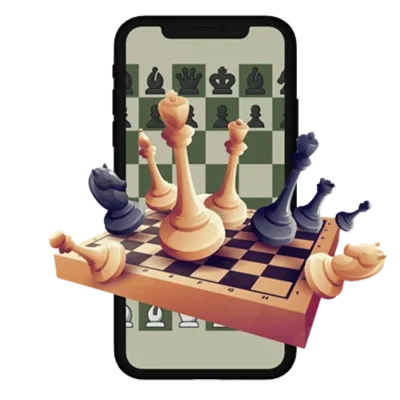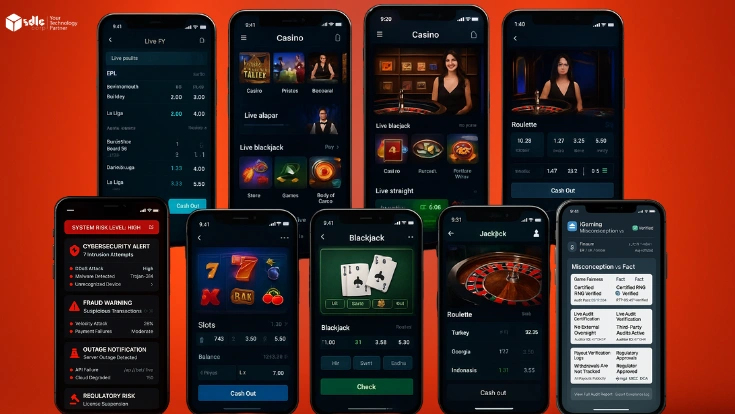Chess, a game of skill, strategy, and intellect, has intrigued players and thinkers alike for centuries. The beauty of chess lies not only in its strategic depth but also in the vast number of possible moves and outcomes. Each time you sit down to play, you’re engaging in a contest where the potential variations seem almost limitless. But how many different ways can a chess game unfold? Can we quantify the total number of chess moves, or is it truly infinite?
In this blog, we’ll explore the mind-boggling complexity of chess, the factors that influence the game’s progression, and why chess holds such a fascination for both casual players and grandmasters alike. We’ll also delve into why understanding the immense possibilities of chess can inspire developers in the realm of chess game development services, encouraging them to craft more sophisticated and engaging chess games for mobile and online platforms.
Start your Chess game development today!
Launch your next big Chess game with our expert development team.

The Basics: How Chess Begins
Every chess game starts the same way with 32 pieces neatly arranged on an 8×8 board. Each player begins with 16 pieces: 8 pawns, 2 rooks, 2 knights, 2 bishops, 1 queen, and 1 king. White always makes the first move, and from that moment onward, the number of potential moves begins to skyrocket.
In the very first move, White has 20 possible moves: 16 pawn moves (two moves per pawn) and 4 knight moves. Black also has 20 possible replies to White’s opening move, which already gives us 400 different possible board positions after the first pair of moves. But this is just the beginning the numbers increase exponentially with each turn.
The Complexity of Chess
One of the reasons chess is so fascinating is because of its combinatorial complexity. While the rules of the game are simple to learn, the sheer number of possible move sequences is staggering. This complexity is one reason why the game has maintained its popularity for centuries. Chess is often called “the game of kings,” and its strategic depth has kept players, from amateurs to grandmasters, engaged for generations.
The complexity of chess is so immense that even modern computers, with all their processing power, cannot calculate every possible game from start to finish. This is where concepts like game theory, algorithms, and artificial intelligence come into play, enabling computers to evaluate positions and make optimal decisions without analyzing every potential move. This intricate complexity also inspires innovations in chess game development, as developers work to create engaging and challenging chess applications that mirror the depth of the game.
The Number of Possible Chess Games
So, just how many different chess games can unfold from the initial position? While it’s impossible to calculate the exact number of all potential chess games, mathematicians and computer scientists have developed estimates based on game theory and combinatorics.
The famous mathematician Claude Shannon calculated that the total number of possible chess games is approximately 10^120. This is known as the Shannon Number. To put that into perspective, this number is vastly larger than the number of atoms in the observable universe, which is estimated to be around 10^80. While this number may not be truly infinite, it’s so large that, for all practical purposes, it feels infinite.
Each move in a chess game drastically alters the possible subsequent moves. The branching factor is the average number of legal moves per turn which hovers around 30. While this varies based on the position, with some having only a few legal moves and others having over 100, this average branching factor leads to an explosion in possible game paths with each turn.
The Role of Opening Moves

The opening moves in a chess game are critical because they set the tone for the rest of the match. There are thousands of well-known opening sequences, known as “openings” or “opening theory.” These sequences have been studied and analyzed by players and computers alike for centuries. Some famous chess openings include the King’s Gambit, the Sicilian Defense, and the Ruy-Lopez.
While these openings provide a strong foundation for players, they are just the beginning of the game’s complexity. After the first few moves, the number of possible variations grows exponentially, even for experienced players who follow the opening theory. The opening moves may set the stage, but the middle game and endgame phases are where creativity and strategy truly shine.
Chess as a Finite Game
While it’s easy to get caught up in the seemingly infinite nature of chess, it’s important to note that chess is, in fact, a finite game. There are only a limited number of legal moves, and rules like the 50-move rule (where a game can be declared a draw if 50 moves are made without a capture or pawn move) and the threefold repetition rule (where the same position appears on the board three times) help ensure that games do not go on forever.
However, the sheer number of possible positions and games is so large that the concept of infinity often comes into play when discussing chess strategy. This enormous complexity is one reason why chess engines, which use algorithms to evaluate and predict moves, have become essential tools for modern players and game developers.
The Role of Computers in Chess
With the advent of computers and artificial intelligence, chess has entered a new era. Programs like Stockfish and AlphaZero can analyze millions of positions per second, giving them the ability to defeat even the best human players. These chess engines rely on a combination of brute-force calculation and sophisticated algorithms to evaluate positions and choose optimal moves.
Interestingly, these programs don’t rely on calculating every possible outcome. Instead, they use heuristic methods to prune the game tree, focusing on the most promising lines of play. This approach mimics human intuition, allowing the programs to “think” more like a human chess player would.
Chess Game Development and AI
The complexity of chess offers exciting opportunities for chess game development companies. In creating chess apps, developers can draw inspiration from the game’s near-infinite possibilities to craft sophisticated and challenging experiences for players. Chess game development services today often integrate AI that can adapt to different skill levels, ensuring that both beginners and experienced players can enjoy a challenging game.
Game development companies also benefit from advancements in machine learning and neural networks. Developers can design apps that provide training modes, analyze past games, and offer suggestions for improvement. These features make chess not only a fun game but also an educational tool.
Start your Chess game development today!
Launch your next big Chess game with our expert development team.

How the Middle Game and Endgame Expand the Possibilities
The middle game is where the majority of chess games are decided. After the opening, players have positioned their pieces in ways that allow for creative tactics and strategic plans. At this point, the number of possible moves and sequences becomes truly staggering. While chess engines can help players understand optimal strategies, the middle game is where human creativity and insight often make the difference between victory and defeat.
The endgame, on the other hand, is where many games come to their conclusion. In this phase, fewer pieces remain on the board, but the complexity doesn’t diminish. Endgames are often highly technical, and one wrong move can lead to a loss even from a seemingly winning position.
The Beauty of Infinite Possibilities
The infinite possibilities of chess are part of what makes the game so captivating. Every match is a new adventure, a unique journey through a maze of strategic decisions. Even players who have played for decades can encounter new positions and ideas in every game. This never-ending variety ensures that chess will continue to be a source of fascination for generations to come.
Conclusion
The number of ways a chess game can unfold is truly mind-boggling. From the first move to the final checkmate, the possibilities are nearly infinite, offering a level of complexity and depth that few other games can match. This complexity has attracted mathematicians, computer scientists, and casual players alike for centuries, and it continues to inspire new Developments in AI and game theory.
For game development companies understanding the vast possibilities of chess can be a source of endless inspiration. Chess game development is not just about recreating the classic game it’s about enhancing it and introducing new ways for players to engage with the timeless battle of wits that chess represents. Whether through chess game development services or innovative features that incorporate AI, the future of chess in the digital age looks bright.
Chess remains a game of infinite possibilities, and as technology evolves, so too does the way we play and experience it.

















